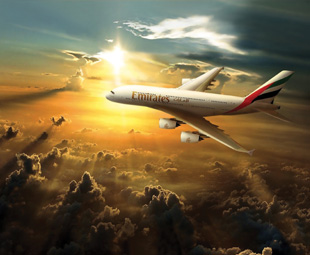Poised for greatness?

Connotations of the Middle East abound, but the region is also poised to be a significant transport and logistics hub. It also offers its commuters some very interesting modes of transportation
How much do you know about the Middle East? You probably know that the region has strong historical and religious significance; that it’s characterised by constant fighting between the Israelis and Palestinians and wars against the Iranians and Iraqis; and that the endless deserts of its oil-rich Arab states are dotted with ultra-modern, nod-to-excess cities that are growing at a substantial rate.
But did you know that the region is made up of 18 individual countries; including Bahrain, Cyprus, Egypt, Lebanon and Turkey? Did you know that it is home to the lowest point on earth – the Dead Sea – at 427 m below sea level; as well as the tallest building in the world: the Burj Khalifa in the United Arab Emirates (UAE)? At 829,8 m, it’s twice as tall as the Empire State Building!
What about the fact that 89 percent of the UAE’s population is made up of immigrants? Or that the country’s capital, Abu Dhabi, is building a city with no cars, zero carbon emissions and a university that will specialise in green technology? (As you may have noticed, the UAE has a lot to boast about …)
 It would stand to reason, then, that the region’s transport make-up is wide and varied. Well, if you can imagine it, then in the Middle East, it will serve as some form of transport … While the region’s location would make it ideal for trade between north Africa, Europe, Russia and Asia, years of turmoil in many of its countries has hampered its transport and logistics development in many areas. Nevertheless, delving into its commuter and commercial transportation provides for some fascinating reading.
It would stand to reason, then, that the region’s transport make-up is wide and varied. Well, if you can imagine it, then in the Middle East, it will serve as some form of transport … While the region’s location would make it ideal for trade between north Africa, Europe, Russia and Asia, years of turmoil in many of its countries has hampered its transport and logistics development in many areas. Nevertheless, delving into its commuter and commercial transportation provides for some fascinating reading.
Air transport is currently the subject of large investment in the region. According to the World Bank, it plays an important role in the economies of the Middle East, contributing US$ 116 billion (R1,2 trillion) to the region’s gross domestic product.
In fact, according to the International Air Transport Association (IATA), the region reported an increase in air freight tonne kilometres of 16,5 percent at the end of 2013 – well above the global average of 6,5 percent.
Should you find yourself on the streets of Turkey or Northern Cyprus, you might decide to travel by dolmus (pronounced dol-moosh). These are similar to South Africa’s own minibus taxis (packed to the brim, they too like to stop wherever is convenient which, in some cases, is highly regulated in Turkey.). These “share taxis” run set routes, which are cleverly identifiable by the colours in which the taxis are painted.
Formal bus services are, however, quite a reliable and respectable form of transport in the region, running regular local, long-distance and cross-border routes.
Commuter rail services seem to be quite limited in the region, this mode of transport predominantly serving freight. Some areas, such as Israel and the UAE, are rapidly expanding their rail networks with a mix of light and heavy rail, while neighbouring Jordan and nearby Kuwait and Yemen have (respectively) little and no rail infrastructure at all.
Turkey’s rail network is far more impressive though; transporting 9 000 million tonne-kilometres of freight in 2010 and offering a comprehensive mainline and high-speed commuter service.
Of course, the region is not all desert, and travel by boat or ferry is often also an option. The abra (a traditional boat made of wood) provides a cheap and easy trip across the Dubai Creek. Dhows in various forms are also a familiar sight in areas including the Red Sea and Persian Gulf. Ferry services are widely described as “practical” … Of course, if you find yourself at the Dead Sea, you could always just jump in and float across …
Last, but not least, I’ll bet that one of your first mental images when reading the words “Middle East” was of camel-back rides across the desert. Well, away from the main centres, that is still an option … Camels (and horses) are very popular for tours in areas such as the ancient Jordanian city of Petra, for example.
There’s no doubt that transport in the region, ranging from centuries-old boats to modern air transport, is as varied as it comes. The region is highly accessible by air, sea and land but, while it is moving forward in some pockets of excellence, as a whole it requires massive investment to reach its full potential as the logistics hub it could be.
Global management consulting firm, Booz and Company, notes that the region requires the development of a strong domestic transport and logistics sector, a “strategic must for further economic development of Middle Eastern countries” – its favourable location an opportunity waiting to flourish.
Imagine then, what wonders might be to come in countries like the UAE …
Published by
Focus on Transport
focusmagsa




